
Mike Smith, NRG Steering Committee
Published in the National Rock Garden Newsletter No. 24, December 2022
The NSW Rock Selection Steering Committee was introduced to the enthusiastic folk of the Eugowra Events & Tourism Association in mid-2021 by Sydney-based economic geologist, Russell Meares OAM. In February 2022, the NRG Steering Committee accepted the offer of an 8.8 tonne block of Eugowra Granite donated by Central West Granite Pty Ltd and agreed to assist the local Events and Tourism Committee with the preparation of a grant application for the associated costs. This rock is significant because it is the most substantially used Australian rock in the new Australian Parliament House. The rock has the commercial name of ‘Carmina Grey’and its use is detailed by Wolf Mayer in his book Images in Stone: a guide to the building stones of Parliament House.
In November 2022, the NRG was donated the sum of $5,000 by well-known GSA members Dr Jane Barron and Dr Larry Barron to cover the costs of uplift, transportation, placement and preparation of the specimen for display. The Steering Committee is most grateful for this support which allowed the transportation of this big rock to the ACT in December 2022. Construction of the new parliament building began in 1981 and was completed in 1988. The principal design of the structure is based on the shape of two boomerangs and most people remember the grass roof topped by an 81-metre (266 ft.) flagpole. For geoscientists, the two boomerang shaped walls are very memorable as they are both 460 m long, 27 m max height, 3 m max width and covered by Carmina Grey rock slabs from the town of Eugowra NSW.
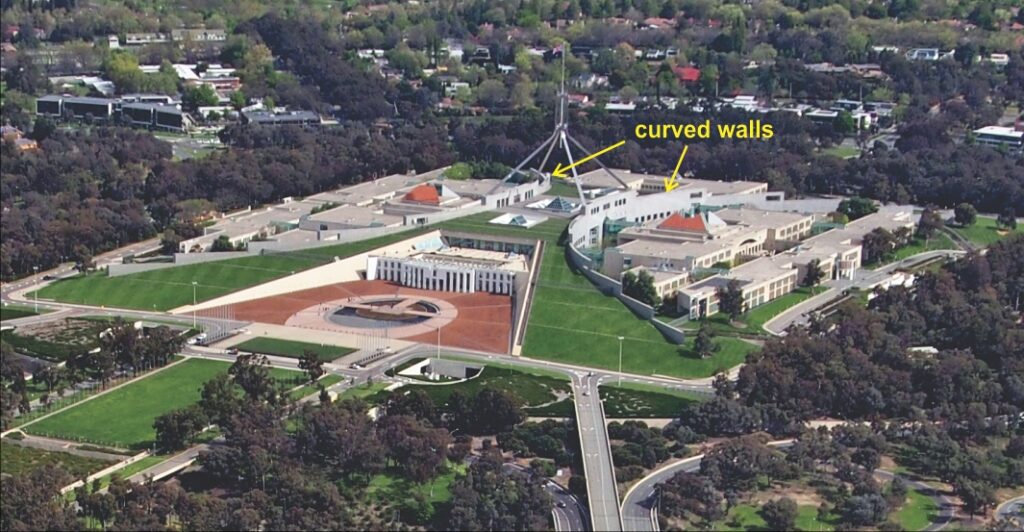
The selection of this rock for the new parliament building is interesting. It eventuated when Italian-born Romaldo Giurgola, the Principal Architect of the Parliament House project, visited the property of renowned Australian architect John Andrews at Eugowra. Romaldo cut his leg on a flat polished piece of the granite at the farm. He liked the rock, visited the Eugowra Granite Mill and, as the hills around Eugowra abound with this granite, he was quoted as saying ‘this is just what we want for Parliament House.’ His vision was that our new Parliament House should have a connection with the natural environment and so used natural stone to achieve this.
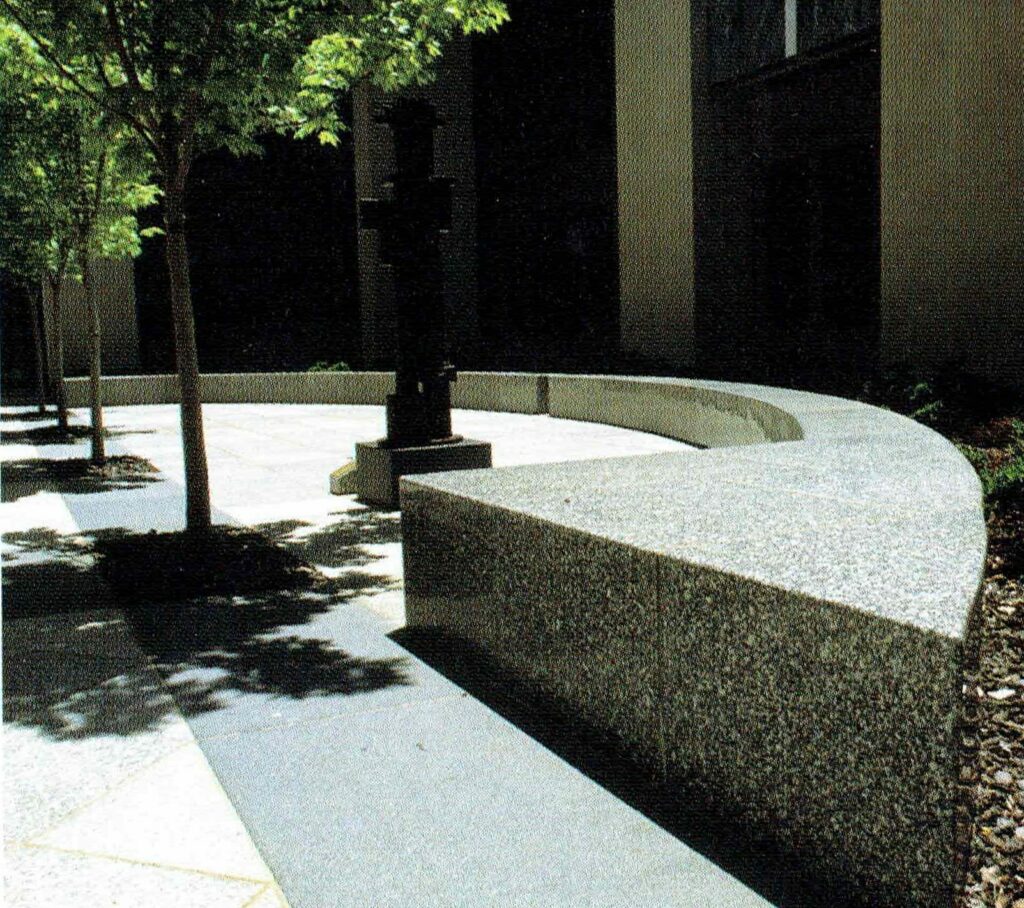
A total of 35 different types of rocks were used in Parliament House, coming from countries as distant as Italy, Brazil, Guatemala, India, China, Portugal, Greece and Norway (Mayer 2009). Many of these are located in the spectacular entry hall of the building. However, by far the largest quantity of any one rock is Eugowra’s Carmina Grey (Mayer 2022, pers. comm.) with a total of more than 24,000 cut slabs of this rock.
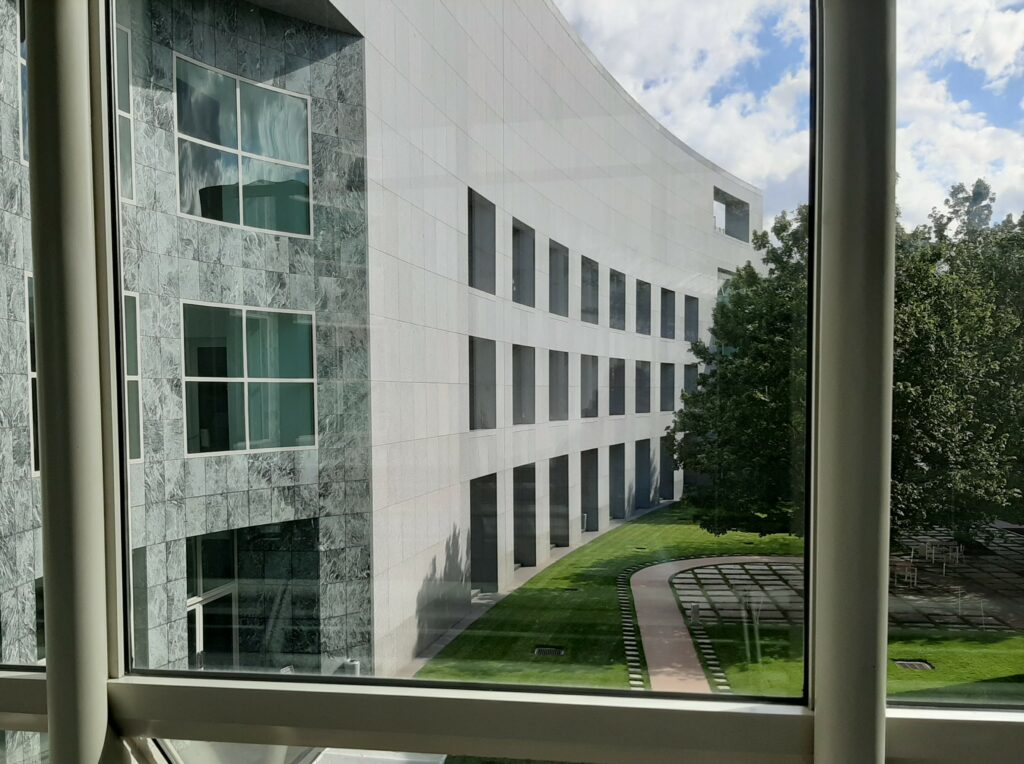
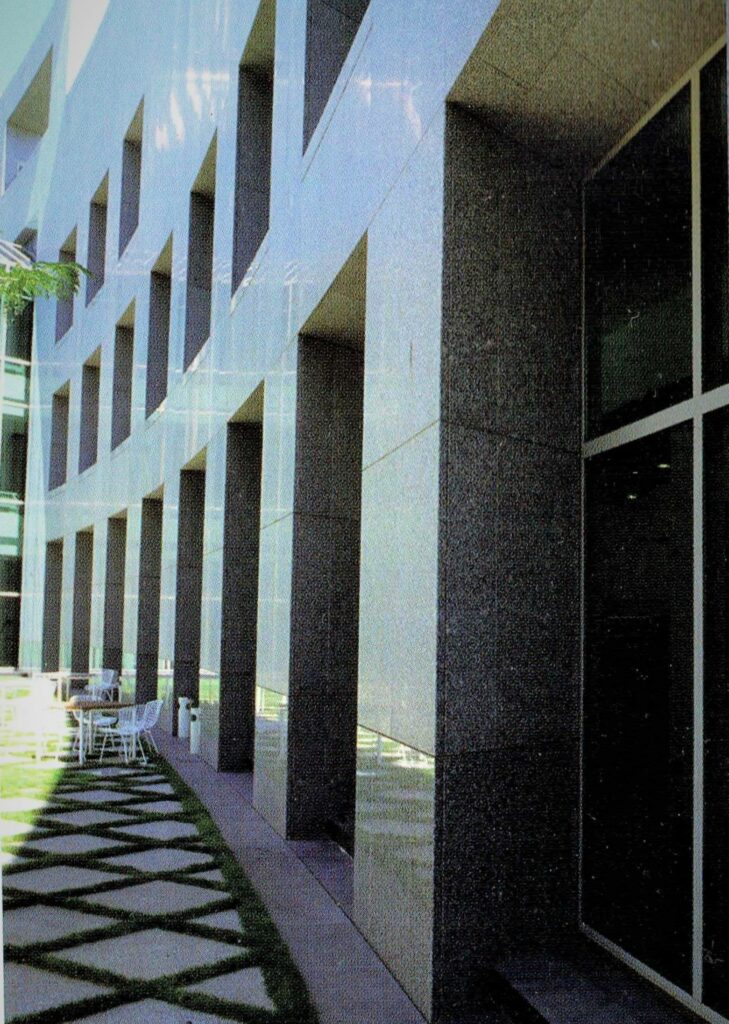
Eugowra is located 39 km east of Forbes, in the Shire of Cabonne which has been the source of granite and marble construction materials for a long time.
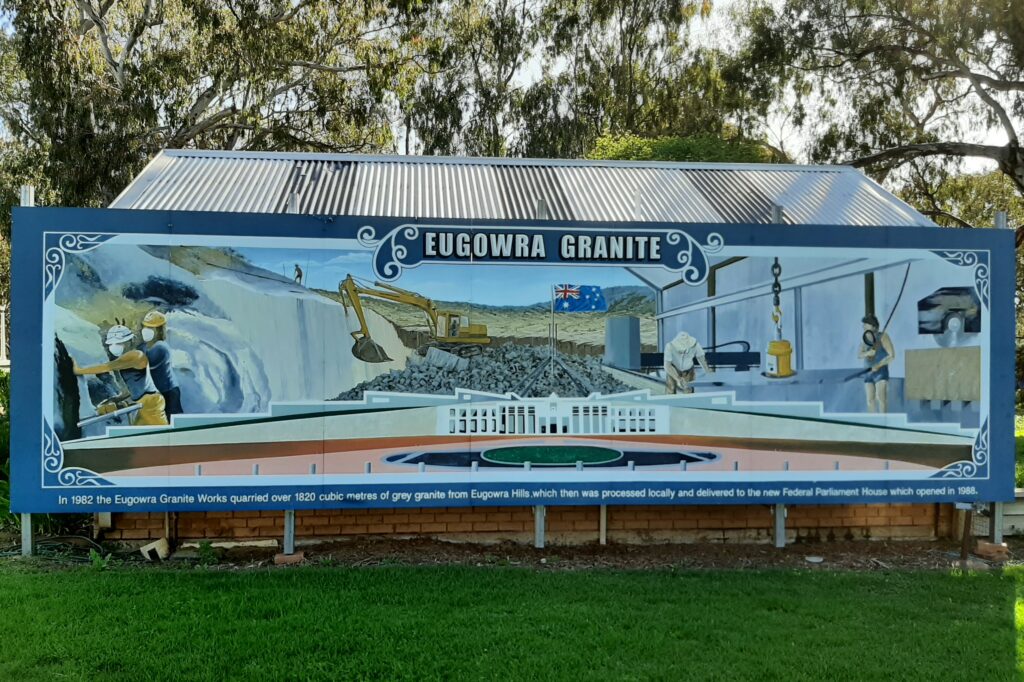
The Eugowra Granite will clearly illustrate to visitors to the National Rock Garden the composition of a granite rock. It consists essentially of three minerals—black biotite, translucent quartz and white feldspar—as seen in this close-up of a polished slab from Geoscience Australia.
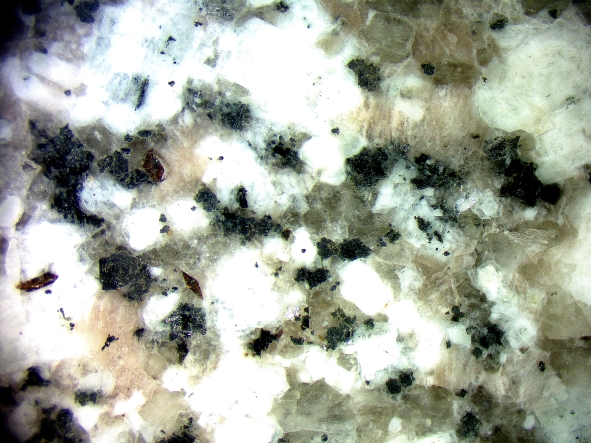
The Eugowra Granite is a roughly equant intrusive body, about 19 km across, which intrudes folded sedimentary rocks of the Late Silurian Moura Formation, as well as the Early Silurian Glenisla Volcanics. Geochronologist Lance Black, formerly of Geoscience Australia, has reported that the age of the Eugowra Granite is 394 million years. This places the magma intrusion in the Early Devonian time period.
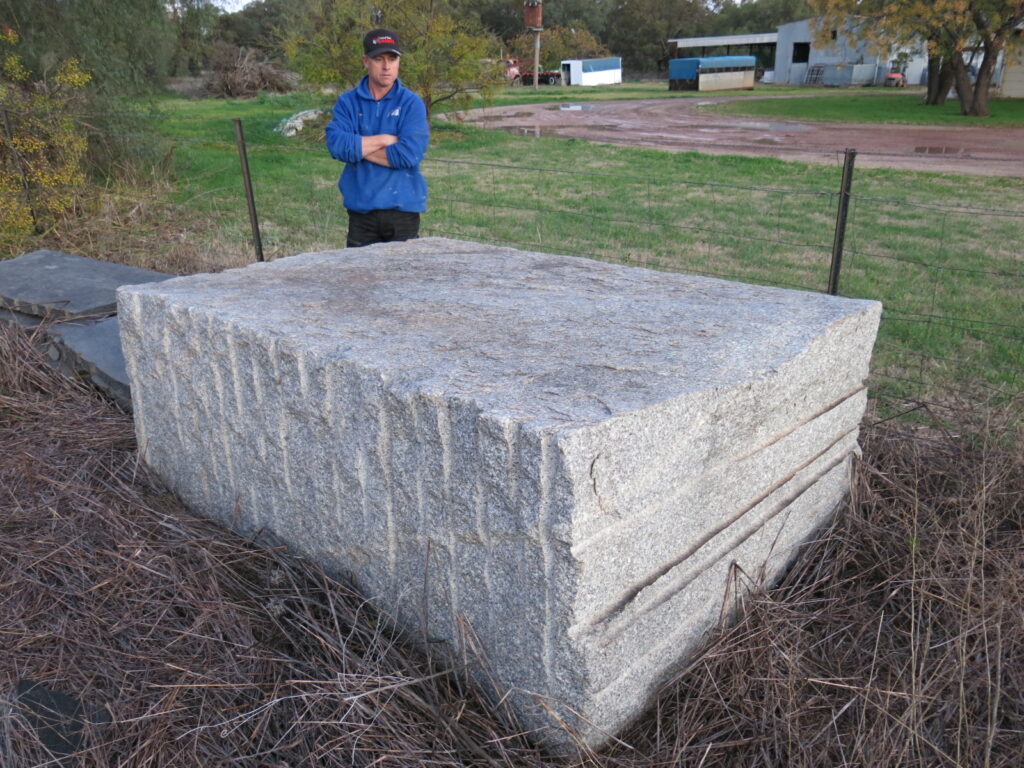
There are many beneficial aspects of this specimen including the following:
- the Carmina Grey rock links our rock garden favourably to Parliament House
- the simple story of formation is easily understood by younger school students
- this rock has a very attractive polished appearance
- the display provides recognition of a small country community
- the large specimen, as well as $5,000 in cash funding, has been donated to NRG
- it has an interesting link to the Escort Rock bushranger story at Eugowra.
The final placement of the Carmina Grey block has yet to be decided but it will most likely be placed in Cluster E (Construction Resources) or Cluster G (Geoscience Knowledge).
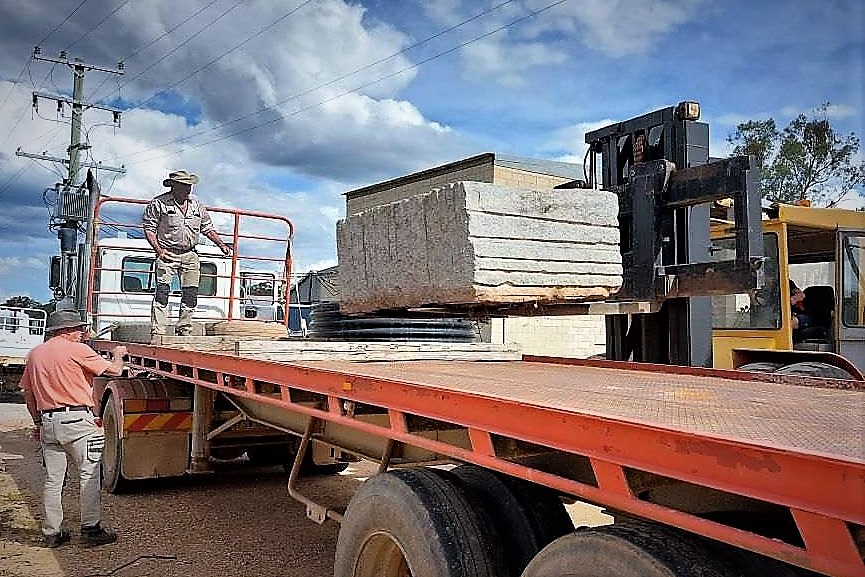
Mrs Shelley Norrie, Secretary of the Eugowra Events & Tourism Association attended the delivery of the granite block. She explained that Eugowra was devastated on the morning of 14 November 2022 by a flash flood that has been variously described as a ‘wall of water’ and ‘inland tsunami’. The NRG Steering Committee offers its deep condolences to the community of Eugowra for the loss of two lives and the destruction of numerous businesses and homes in the town. The town’s famous murals were also ruined, including the one shown above. We believe Eugowra will recover, and we encourage all of our readers to visit the town once the community has substantially recovered.
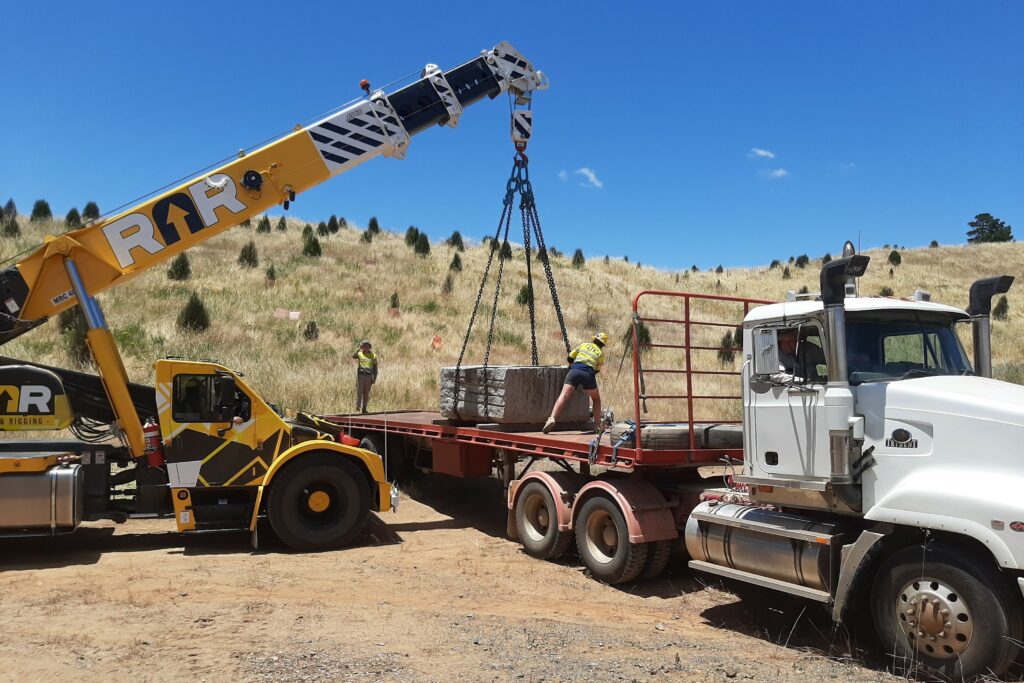
References
Mayer, W., 2009. Images in stone: a guide to the building stones of Parliament House. Geological Society of Australia, ACT Division. Available at the Parliament House Shop.
Raymond, O.L., Duggan, M.B., Lyons, P., Scott, M.M., Sherwin, L., Wallace, D.A., Krynen, J.P., Young, G.C., Wyborn, D., Glen, R.A., Percival, I.G., Leys, M., 2001. Forbes, New South Wales, 1:250 000 Geology Sheet SI55-7 – Second edition. Australian Geological Survey Organisation and Geological Survey of New South Wales, 1v, Map.
Times Past Productions Chintola Pty Ltd 2002. A Big Country, A Contextual History of Cabonne. Prepared for Cabonne Shire Council, available on the Cabonne Shire Council website.
Wyborn D., Turner, B S and Chappell, B W., 1987. The Boggy Plain Supersuite: A distinctive belt of I-type igneous rocks of potential economic significance in the Lachlan Fold Belt. Australian Journal of Earth Sciences, 34 (1): 21–43. https://doi.org/10.1080/08120098708729392


